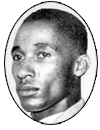Michigan Voters Will Decide If the State’s Flagship University Can Continue to Consider Race in Its Admissions Decisions
 The Michigan Supreme Court has ordered that the so-called Michigan Civil Rights Initiative appear on the ballot this November. The public referendum will ask voters to approve an amendment to the state constitution which will prohibit the consideration of race in admissions decisions at the University of Michigan and other state-operated colleges and universities. Opponents of the measure had asked the court to throw the measure off the ballot because they alleged that the validating signatures had been collected fraudulently. The Michigan Supreme Court has ordered that the so-called Michigan Civil Rights Initiative appear on the ballot this November. The public referendum will ask voters to approve an amendment to the state constitution which will prohibit the consideration of race in admissions decisions at the University of Michigan and other state-operated colleges and universities. Opponents of the measure had asked the court to throw the measure off the ballot because they alleged that the validating signatures had been collected fraudulently.
The outcome of this ballot initiative is of great importance to blacks. The University of Michigan has been a stronghold of black higher education. The vast majority of its African-American graduates entered the university under affirmative action rules.

How Proposition 209 Continues to Damage Black Aspirations for Business School Education in California
 At the Haas School of Business at the University of California at Berkeley, the ban on race-sensitive admissions continues to have a very serious negative impact on black enrollments. In 1996, the year before the ban on race-sensitive admissions went into effect, there were 11 black students who matriculated at the business school. The next year the number dropped to five black students. At the Haas School of Business at the University of California at Berkeley, the ban on race-sensitive admissions continues to have a very serious negative impact on black enrollments. In 1996, the year before the ban on race-sensitive admissions went into effect, there were 11 black students who matriculated at the business school. The next year the number dropped to five black students.
Now, the situation has gone from bad to worse. In 2005 there was only one black student in the entering class at the Haas School. In 1996 blacks were 4.5 percent of the entering students at the Haas School. This year the figure is 0.4 percent.

  |
 “On the night before President Clinton gave me the Presidential Medal of Freedom at the White House I gave a dinner for a small group of friends at the Cosmos Club. It was during our stroll through the club that a white woman called me out, presented me with her coat check, and ordered me to bring her coat.” “On the night before President Clinton gave me the Presidential Medal of Freedom at the White House I gave a dinner for a small group of friends at the Cosmos Club. It was during our stroll through the club that a white woman called me out, presented me with her coat check, and ordered me to bring her coat.”
— John Hope Franklin, in his autobiography Mirror to America (Farrar, Straus and Giroux)
|
A Persistence Problem Among Blacks Who Choose to Study in the Sciences and Mathematics
 A new report from the American Council on Education finds that equal percentages of black and white students enter college with plans to pursue study in science, mathematics, and engineering. But black students were significantly less likely than whites to earn their bachelor’s degree in these subjects. A new report from the American Council on Education finds that equal percentages of black and white students enter college with plans to pursue study in science, mathematics, and engineering. But black students were significantly less likely than whites to earn their bachelor’s degree in these subjects.
The study is based on Department of Education data for more than 12,000 undergraduates who entered college in 1995. The data showed that 18.6 percent of black students entering college planned to study science, mathematics, or engineering when they matriculated. For whites, the figure was 18.0 percent.
The study found that three years later 55.7 percent of the black students who had planned to major in these disciplines were still enrolled in courses of study within these fields. This was just slightly below the level for whites, which stood at 57.1 percent.
But of those students remaining in science and mathematics fields after three years, only 62.5 percent of blacks went on to earn a diploma. In contrast, 87 percent of whites who had chosen to major in science and mathematics earned their degree.
The study concluded that those who completed their degree took a more rigorous curriculum in high school, were more likely to come from high-income families, were more likely to have a parent who had completed college, and were less likely to have held a job while in college.

New Student Group at Cornell to Tackle Racism
 Inspired by the Academy Award-winning best picture Crash, which confronts racism in American society, students at Cornell University formed Challenging Racism and Systems of Hierarchy (CRASH) to confront racism on campus and in the surrounding community. According to the group’s mission statement, CRASH “acts in solidarity with socially marginalized people who experience social dehumanization. We are committed to confronting institutionalized inequality, oppression, and hierarchy on all levels.” Inspired by the Academy Award-winning best picture Crash, which confronts racism in American society, students at Cornell University formed Challenging Racism and Systems of Hierarchy (CRASH) to confront racism on campus and in the surrounding community. According to the group’s mission statement, CRASH “acts in solidarity with socially marginalized people who experience social dehumanization. We are committed to confronting institutionalized inequality, oppression, and hierarchy on all levels.”
CRASH is calling on the Cornell administration to include a diversity requirement within the curriculum.

Penn May Be on the Verge of Setting a Milestone in Black Freshman Enrollments
The University of Pennsylvania recently announced that it has accepted 3,622 of its 20,479 applicants this year. That is an admit rate of 17.7 percent.
 African Americans were 11.1 percent of all admitted students at Penn. This was an increase from 9.4 percent of all admitted students in 2005. Overall, more than 400 black students were admitted to the university this year, up nearly 11 percent from a year ago. In 2005, 53 percent of all admitted black students decided to enroll at Penn. If Penn achieves similar yield statistics this year, blacks will make up about 9 percent of the entering class at Penn this fall. African Americans were 11.1 percent of all admitted students at Penn. This was an increase from 9.4 percent of all admitted students in 2005. Overall, more than 400 black students were admitted to the university this year, up nearly 11 percent from a year ago. In 2005, 53 percent of all admitted black students decided to enroll at Penn. If Penn achieves similar yield statistics this year, blacks will make up about 9 percent of the entering class at Penn this fall.
This will be the highest percentage of incoming black freshmen at Penn since JBHE began tracking first-year enrollments at Ivy League institutions in 1992. This would place Penn at or near the top in black enrollments among Ivy League colleges.

Mid-continent Research for Education and Learning (McREL)

Vice President of Research & Evaluation
Join Mid-continent Research for Education and Learning (McREL), an internationally recognized, nonprofit organization located in Denver, Colorado. In addition to contributing to the body of knowledge in educational research, McREL provides products and services primarily for K-12 educators to promote best instructional practice. Established in 1966, McREL maintains steady growth and provides a wide variety of services regionally, nationally, and internationally. Our staff of approximately 100 employees is comprised of dedicated experts with a wide range of education-related experience.
McREL seeks culturally and professionally diverse applicants for the full time position of VP of Research & Evaluation. Provide ambitious leadership and play a central role in directing a top-flight group of research and evaluation professionals. Must have a vision, energy, and a rich combination of experience and personal qualities to support the continuing development of our nonprofit organization.
Education and experience needed to qualify for this unique position include:
• Ph.D. in Research or Evaluation methodology
• Prior experience as a senior director or center director
• Supervision of a research or evaluation unit, including budgeting and project management.
• Experience managing a diversified portfolio of research and evaluation grants and products
• New business development efforts
• Proven track record with successful grants and contracts
• Experience in leadership at the highest level of an organization
Application materials may also be emailed and must include a letter of interest, resume, and contact information for three references in Word format. To explore this career of a lifetime, forward your materials to:
VP of Research & Evaluation Opportunity
McREL
4601 DTC Blvd, #500
Denver, CO 80237
[email protected] / www.mcrel.org
All candidates will be notified as materials are received. Additional information about McREL may be obtained at www.mcrel.org. We are an equal opportunity/affirmative action employer. Persons from diverse backgrounds are encouraged to apply.
Mississippi Honors Clyde Kennard, a Man Framed and Sent to Jail in 1960 for Trying to Racially Integrate the University of Southern Mississippi
 Clyde Kennard was a decorated war hero who in 1956 sought admission to the then all-white University of Southern Mississippi. Kennard was denied enrollment because of his race. But he nevertheless persisted in his efforts to be admitted to the institution. Clyde Kennard was a decorated war hero who in 1956 sought admission to the then all-white University of Southern Mississippi. Kennard was denied enrollment because of his race. But he nevertheless persisted in his efforts to be admitted to the institution.
Then, in the Jim Crow tradition of severely punishing Negroes who tried to rise above their assigned station, Kennard was accused of receiving $25 of stolen chicken feed. In 1960 he was sentenced to seven years at the notorious Parchman Prison Farm. He died three years later from colon cancer.
Late in 2005 the chief witness in the case against Kennard recanted his testimony and stated that Kennard had been framed. Legal efforts are now under way to overturn Kennard’s conviction and clear his name.
Thirty-six students from the University of Southern Mississippi recently traveled to the state capital for a ceremony in the state Senate chamber honoring Clyde Kennard. A resolution was passed honoring him. Governor Haley Barbour said that it was clear that Kennard was not guilty of any crime and proclaimed it Clyde Kennard Day in the state of Mississippi.

Seventy Years Too Late: Lloyd Gaines Gets His Law Degree
The courageous young black man Lloyd Gaines, who spearheaded the first major attack on state-commanded racially segregated higher education, will be awarded an honorary degree at the University of Missouri law school's commencement ceremony this spring.
 Lloyd Gaines was the valedictorian of his all-black high school. He then enrolled at Lincoln University, the historically black educational institution in Jefferson City, Missouri. He graduated with honors in 1936. Lloyd Gaines was the valedictorian of his all-black high school. He then enrolled at Lincoln University, the historically black educational institution in Jefferson City, Missouri. He graduated with honors in 1936.
Gaines then applied for admission to the law school at the University of Missouri. Gaines’ application was denied because of his race. The state of Missouri offered to pay Gaines’ tuition at an out-of-state law school. He rejected that offer and with the help of Charles Hamilton Houston and Thurgood Marshall, he filed a lawsuit against the university.
His suit rested on solid ground. Although the state was then legally permitted to maintain an all-white law school, it could do so only if it also maintained a comparable school for blacks. This was the so-called separate but equal 1896 Supreme Court doctrine of Plessy v. Ferguson.
Gaines lost the initial battles in local and state courts. But eventually in December 1938 the Supreme Court of the United States ordered the state of Missouri to admit Gaines to the University of Missouri law school or to establish a law school for blacks in the state that was of equal academic quality.
While affirming the separate but equal doctrine of the Plessy v. Ferguson ruling, the decision was the first step in dismantling the system of unequal higher education in this country for Negroes.
Due to threats on his life as the case wound through the legal system, for his safety the NAACP Legal Defense Fund had relocated Gaines to Chicago. But on March 19, 1939, Gaines left his home in Chicago to go to the post office. He was never seen again and was presumed murdered. The case remains unsolved.
In addition to his being awarded an honorary degree at the law school's commencement ceremony this spring, the university has also renamed its Black Cultural Center in Gaines' honor and a scholarship program has been established in his name.

Appointments
 • C. Ray Williams Jr. was promoted to the position of director of multicultural programs and services at Virginia Tech. He was the assistant director of the multicultural academic opportunities program at the university. Williams is a graduate of Radford University where he also earned a master’s degree. • C. Ray Williams Jr. was promoted to the position of director of multicultural programs and services at Virginia Tech. He was the assistant director of the multicultural academic opportunities program at the university. Williams is a graduate of Radford University where he also earned a master’s degree.
 • Olive Mwihaki Mugenda was named vice chancellor of Kenyatta University. The university, located in the suburbs of Nairobi, Kenya, has enrollments of approximately 23,000 students. Dr. Mugenda, who holds a master’s degree and a Ph.D. in applied nutrition from Iowa State University, is the first woman to head a public university in Eastern Africa. She previously served as the deputy vice chancellor of finance, planning, and development. • Olive Mwihaki Mugenda was named vice chancellor of Kenyatta University. The university, located in the suburbs of Nairobi, Kenya, has enrollments of approximately 23,000 students. Dr. Mugenda, who holds a master’s degree and a Ph.D. in applied nutrition from Iowa State University, is the first woman to head a public university in Eastern Africa. She previously served as the deputy vice chancellor of finance, planning, and development.

|
Black Colleges With the Highest Graduation Rates for African-American Students
By a large margin, the highest black student graduation rate at a historically black college belongs to the academically selective, all-women Spelman College in the city of Atlanta. In fact, the Spelman black student graduation rate of 77 percent is higher than the black student graduation rate at such prestigious and primarily white colleges as Bates, Colby, Berkeley, UCLA, Michigan, Claremont McKenna, and Carnegie Mellon.
Following Spelman in the rankings, the next-highest black student graduation rate among the HBCUs was at Morehouse College and Fisk University. At Morehouse and Fisk, 64 percent of the entering black students go on to graduate within six years. Hampton University, Miles College, Howard University, and Elizabeth City State University in North Carolina sadly are the only other HBCUs that graduate at least half of their black students within six years.

Is North Carolina’s New Education Lottery Good for Blacks?
On March 30, North Carolina became the 42nd state to offer a state lottery. On the first day, $8 million in tickets were sold for the North Carolina Education Lottery. Estimates are that $1.2 billion in tickets could be sold annually with net proceeds for education of $400 million or more.
 The proceeds from the lottery will be divided as follows: half the money will be used to reduce class sizes in early elementary school grades with the goal of having one teacher for each 18 students; 40 percent of the proceeds will be earmarked for school construction; and the final 10 percent of the profits from the lottery will be used for college scholarships. In order to qualify for money for college from the lottery fund, a student must be eligible for a federal Pell grant for low-income students. The proceeds from the lottery will be divided as follows: half the money will be used to reduce class sizes in early elementary school grades with the goal of having one teacher for each 18 students; 40 percent of the proceeds will be earmarked for school construction; and the final 10 percent of the profits from the lottery will be used for college scholarships. In order to qualify for money for college from the lottery fund, a student must be eligible for a federal Pell grant for low-income students.
Blacks make up more than 20 percent of the college-age population in North Carolina. And college-bound blacks in North Carolina are disproportionately from low-income families. Therefore, college-bound black students will benefit from the new lottery scholarships.
But the black community may pay a huge price. A large percentage of the retail outlets with lottery sales terminals are located in predominantly black, low-income neighborhoods. Critics of the lottery say that far more money will be spent by blacks in these neighborhoods than the money that is returned in the form of educational funding or scholarships.

The Downsizing of Black College Reunion
Black College Reunion began in the spring of 1984 when students and alumni of the predominantly black Bethune-Cookman College and Florida A&M University convened in Daytona Beach during spring break. Over the years, the annual event grew to include black college students from across the country.
Since its inception, Black College Reunion has been steeped in controversy. Daytona Beach has a history of rigid racial segregation. In the past, many shop and restaurant owners closed their doors during the three-day Black College Reunion rather than cater to a black clientele. The local tourist authority tried to ban the event. Violence has also plagued Black College Reunion. In 1998 a black man opened fire on a crowded Daytona Beach street at midnight. Four police officers were shot as were two bystanders. The gunman was killed. At that time Daytona Beach’s mayor called the event “a threat to public safety.”
But the city and its businesses made so much money during Black College Reunion that efforts to do away with it were always turned aside. The event continued to grow, spurred on by the involvement of Black Entertainment Television’s filming of its annual Spring Bling concert which brought crowds of 200,000 or more to Daytona Beach.
In 2006 BET staged its annual Spring Bling in Miami and attendance at Black College Reunion dwindled to about 50,000. After more than two decades of controversy in Daytona Beach, many students from black colleges now prefer to spend their spring break elsewhere.

  |
7.8% Percentage of all teachers in traditional public K-12 schools in 2004 who were black.
15.2% Percentage of all teachers in traditional public K-12 schools in 2004 who were black.
source: U.S. Department of Education
|
HBCU Graduate Is the Circus’ Only African-American Clown
After finishing high school in Atlanta, Jamarr Woodruff applied to Ringling Brothers Clown College. As one of 1,300 candidates for just a few positions, Woodruff was not accepted. With his dream of becoming a circus clown dashed, he went to work as a dishwasher.
The next spring Woodruff matriculated at Alabama State University, but he hadn’t given up his dream of becoming a circus clown. He participated in campus theatrical productions and earned money as a clown for children’s birthday parties. While in college he also honed his juggling and tumbling skills.
 After graduation from Alabama State in 2002, Woodruff enrolled in a graduate program at the Dell’arte International School of Physical Theater in Blue Lake, California. He later enrolled at the Clown Conservatory at the Circus Center in San Francisco. There he was recruited by Ringling Brothers for its 136th annual tour. This season he is the only black among 30 clowns in the large-city Ringling Brothers tour. Known as the J-Man and the Clown of Crunk, Woodruff performs as many as 18 shows a week. After graduation from Alabama State in 2002, Woodruff enrolled in a graduate program at the Dell’arte International School of Physical Theater in Blue Lake, California. He later enrolled at the Clown Conservatory at the Circus Center in San Francisco. There he was recruited by Ringling Brothers for its 136th annual tour. This season he is the only black among 30 clowns in the large-city Ringling Brothers tour. Known as the J-Man and the Clown of Crunk, Woodruff performs as many as 18 shows a week.

Morehouse College Wins the Honda Campus All-Star Challenge
For the fourth time in the past six years, Morehouse College, the historically black institution for men in Atlanta, has won the Honda Campus All-Star Challenge. Morehouse came out on top in the question and answer quiz-show-type format among 64 teams from historically black colleges and universities. Students are asked academic questions on a wide variety of topics from science to history to popular culture.
 More than 320 students from the 64 black colleges and universities competed in the event. All 64 schools compete in a round-robin tournament to narrow the field down to the top 16 teams. These 16 colleges and universities then compete in single-elimination matches. Morehouse defeated a team from North Carolina Central University to win the championship and the accompanying $50,000 grant for the college from Honda. More than 320 students from the 64 black colleges and universities competed in the event. All 64 schools compete in a round-robin tournament to narrow the field down to the top 16 teams. These 16 colleges and universities then compete in single-elimination matches. Morehouse defeated a team from North Carolina Central University to win the championship and the accompanying $50,000 grant for the college from Honda.
The Honda Campus All-Star Challenge began in 1989 with 16 teams competing for the title. The challenge expanded to its present 64-team format in 1996. Since that time Florida A&M University has won the challenge five times and Morehouse has won four times. The only other schools to win the challenge since 1996 are Clark Atlanta University and Alabama State University.

Students Demand New Search for Director of African-American Student Affairs at University of Arizona
 The University of Arizona had narrowed the field of applicants to two finalists for the position of director of African-American student affairs. The candidates were Mounira Morris, director of diversity affairs for Allegheny College in Pennsylvania, and Nura A. Dualeh, coordinator for the McNair Achievement Program at the University of Arizona. The University of Arizona had narrowed the field of applicants to two finalists for the position of director of African-American student affairs. The candidates were Mounira Morris, director of diversity affairs for Allegheny College in Pennsylvania, and Nura A. Dualeh, coordinator for the McNair Achievement Program at the University of Arizona.
But now the university has decided to delay hiring a person for the position after students complained that they were not consulted about the search. Black student groups on campus claim that there was no input from undergraduate students on who should fill the position. The university claims that a student was appointed to the search committee but never showed up for meetings.
The administration decided that if it went ahead and made the appointment it would anger black students on campus, and the new director, who would be in charge of the Martin Luther King Jr. Student Center, would be placed in an awkward situation.
Ofunneka Arah, head of the NAACP chapter on campus, told the Tucson Citizen, “We want to start over. We want the process to be done the right way.”

Chapel Hill to Name a Dormitory After a Black Slave
 The University of North Carolina at Chapel Hill announced that it will rename a campus dormitory after George Moses Horton. Horton was born a slave in 1798. He was taught to read and write by the wife of a faculty member on the UNC campus. The University of North Carolina at Chapel Hill announced that it will rename a campus dormitory after George Moses Horton. Horton was born a slave in 1798. He was taught to read and write by the wife of a faculty member on the UNC campus.
Horton then wrote love poems and sold them to students at a farmers’ market on campus. Horton also worked for university president Joseph Caldwell and is said to have sat in on many classes at the university. He later became the first black man in the South to publish a book of poetry. Horton died in 1883.
The George Moses Horton residence hall will be the fifth building on the Chapel Hill campus named after an African American. Another building named after African-American tree surgeon William J. Hubbard is in the planning stages.

University of North Carolina, Wilmington

Assistant Director of Violence Prevention
CARE (Collaboration for Assault Response and Education)
The Assistant Director of Violence Prevention serves as the primary violence prevention, education, and consultation coordinator for the university campus. The Assistant Director provides consultation for students, faculty, staff, and parents, including on-call crisis response; serves as a student advocate for issues of sexual assault, sexual harassment, stalking, and relationship violence and abuse; and provides violence prevention and education programs to the entire university community. This position is responsible for the strategic planning, administrative oversight, and evaluation of the university’s coordinated student violence response and prevention program.
A Master’s degree in counseling, social work, psychology or related field is required. Candidates must have 5 years of experience in college counseling or prevention services. Candidates must possess a demonstrated ability to work and communicate effectively with college students, staff, faculty and parents of diverse backgrounds. Expertise in trauma recovery and substance abuse preferred.
Initial consideration of all completed application materials will begin May 5, 2006. The search will remain open until a successful candidate is identified. To apply, please complete the online application process available on the Web at http://consensus.uncw.edu. A letter of application, complete resume and contact information (including e-mail address) for three current professional references should be addressed to Assistant Director of Violence Prevention Search Committee and attached to the online application - not e-mailed or mailed. Microsoft Word or Adobe PDF attachments are specifically preferred. For questions regarding online application process, contact Abby Knight at 910-962-7771. Under North Carolina law, applications and related materials are confidential personnel documents and not subject to public release.
Salary is competitive and will be commensurate with qualifications and experience.
UNCW is a premier comprehensive undergraduate university with a rapidly growing campus community of approximately 11,500 students. The campus is located five miles from the Atlantic Ocean in southeastern North Carolina.
UNCW is an equal opportunity, affirmative action employer. Minorities and women are encouraged to apply.
In Memoriam
Theodore Hemmingway (1941-2006)
Theodore Hemmingway, who taught history at Florida A&M University for more than three decades and was named Teacher of the Year four times, died from a heart attack late last month at his home in Tallahassee. He was 64 years old.
Hemmingway was a native of Rains, South Carolina. One of eight children, his mother picked cotton in order to pay her son’s tuition at North Carolina Central University. He graduated in 1964 and earned a master’s degree in history one year later.
Hemmingway joined the history department faculty at Florida A&M in 1972. He later earned a Ph.D. in history from the University of South Carolina.
At the time of his death, Hemmingway was working on a book about the devastating 1928 Florida hurricane.

Grants
 • Ocean Bank of Miami has donated $1 million to Florida Memorial University, the historically black educational institution in Miami. The money will be used to pay for the completion of the student union building, which will bear the bank’s name. Some of the money will be used to fund the Ocean Bank Endowed Scholarships, which were established at the university in 2002. • Ocean Bank of Miami has donated $1 million to Florida Memorial University, the historically black educational institution in Miami. The money will be used to pay for the completion of the student union building, which will bear the bank’s name. Some of the money will be used to fund the Ocean Bank Endowed Scholarships, which were established at the university in 2002.

|



